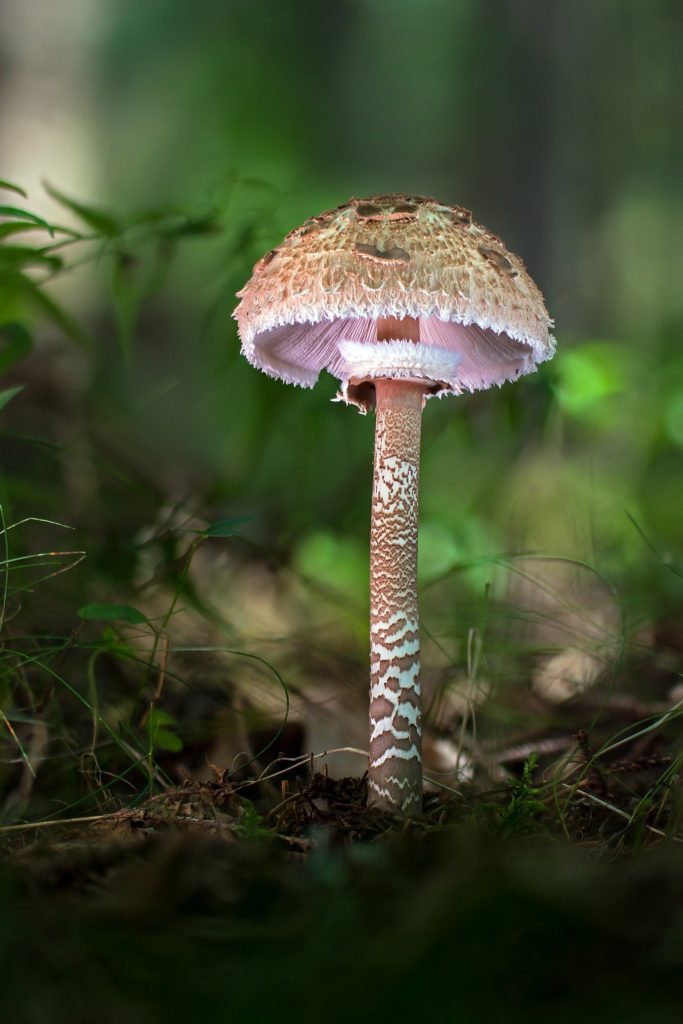 This is a major group of plants that are distinguished from all of the others because they lack the pigments that would enable them to carry out photosynthesis.
This is a major group of plants that are distinguished from all of the others because they lack the pigments that would enable them to carry out photosynthesis.
Thus they are not autotrophic; they cannot make food materials by the use of light energy and simple chemical substances as can the so-called green plants (some of which may be blue-green, red, or brown according to which pigments their cells contain). Their food materials have to be made therefore initially by green plants. Indirectly they may obtain food by living on the dead remains of animals that lived on plants. One large section of the group, then are saprophytic; that is to say, they live on food manufactured by other organisms.

Some species are parasitic on green plants, animals, and other fungi. However, in general they do not cause anything like the amount of disease in human beings that bacteria do. In fact, when one considers how valuable yeast and the cheese-producing fungi are to mankind it is clear that as a group they are much more helpful than disadvantageous. This is even before one has contemplated the large number of antibiotic substances that are produced by fungi.
In structure fungal species may be unicellular, filamentous or thalloid as in the familiar mushrooms and toadstools. The latter are merely large aggregations of filaments or hyphae, as they are called in mycology.
Although there are enormous numbers of fungal species, they can be classified in a relatively simple system that only consists of a few subdivisions. The simplest group have unicellular reproductive structures, these are the Phycomycetes. The next more complex group construct somewhat larger reproductive bodies within; they produce asci, hence they are called ascomycetes.
The largest fungal bodies which are most familiar to humans are of course the mushrooms and toadstools. In these, basidia are formed and thus the group are termed Basidiomycetes.
A final group have never been observed to produce any special structures and so they cannot be placed in any of the above groups. They are given the rather curious name of Fungi imperfecti. If any of this group were to be observed to produce, say, an ascus then of course they would be transferred to the Ascomycetes. Similarly, if any of the other highly characteristic reproductive bodies were to be seen to be produced by any of the Fungi imperfecti they would be moved to the appropriate group.
Large numbers of fossil genera and species have been discovered.
FUNGI FOSSIL EXAMPLES
- Palaeomyces
- Palaeosclerotium
- Palaeancistrus
- Protoascon
- Manginula
- Microthyrium
- Meliolinites
- Coronasclerotes
- Peronosporonoides
- Circulisporites
- Geasterites
- Fomes.
From the fossil evidence it would appear that for about 3 billion years in the early history of the Earth there was a slow evolution of algal-like plants in the seas, lakes and rivers before the land areas of the world began to be colonized about 400 million years ago.
It is still something of an unsolved mystery to authoritative palaeobotanists why such an enormous period of time should elapse before plants capable of dwelling on land made their appearance. Especially when one considers that once the step on to land was made, much more complicated structures were evolved comparatively rapidly.
In the next chapter we shall take up the story again at a point about 400 million years ago.